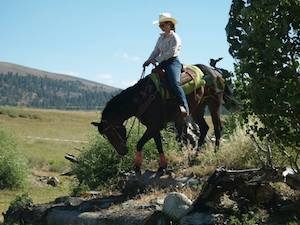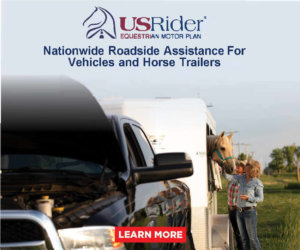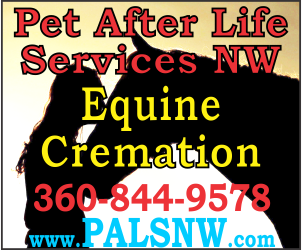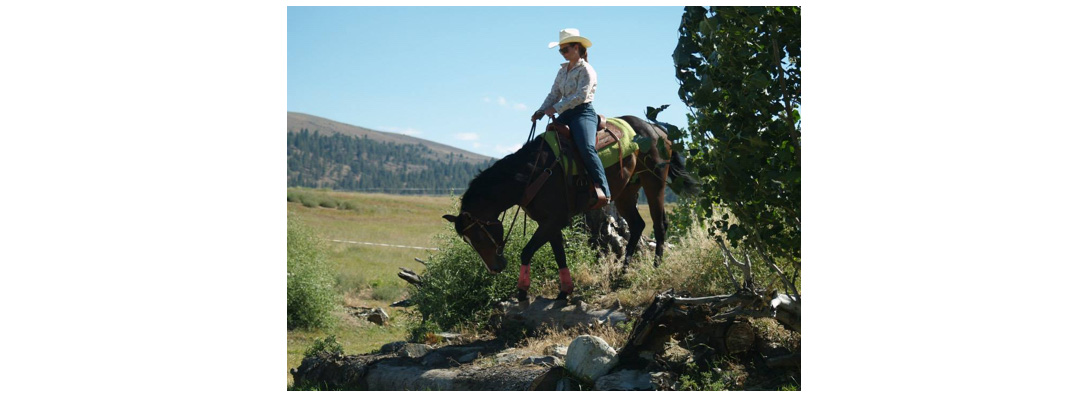The Many Reasons—and Options—for Equine Insurance
by Lea Hoover

One thing often overlooked when buying a horse is purchasing insurance on your new investment. Whether your new horse is a world champion cutting horse or a trail mount for your daughter, often times if the unthinkable were to happen you wouldn’t be able to replace the horse. Insuring your horse can be a confusing process, however. There are many different options; how do you know which is right for your situation?
Let’s talk about coverage options. All policies are built on top of a mortality policy (or life insurance on your horse). Mortality insurance covers up to the value of the horse in the event of death from accident, illness, or disease and usually loss due to theft. Most policies are very similar but some do not cover theft, and value of the horse can be determined in different ways. In most cases, the value of the horse is figured by how much you have financially invested in it. For example, if you bought your horse yesterday and you paid $6,500 that is what the insurance company would use for value.
For horses that weren’t recently purchased the value is determined by purchase price, money invested in training, and show or winning records. Fair market value can also play a factor. Let’s say you bought a stallion 5 years ago for $10,000. He was sold as a stud only and is not broke to ride. Today he has proven infertile and you have begun training him, but he is considered green broke. The insurance company would have a tough time insuring this horse for $10,000 since his use when purchased and his use today are different. The price of mortality policies is a percentage of the value of the horse dependent on what you use it for.
Major medical (health insurance) is a common addition to a mortality policy. It covers veterinary treatment, medication, and surgery due to accident, injury or illness. This coverage is not meant to be used for routine preventative care, rather for emergency, and long term treatments such as laminitis, a serious bone fracture, or colic surgery. Major medical will run you $325 to $525 per year in addition to your mortality premium, depending on limit of coverage.
Another option is surgical coverage for emergency or necessary surgery in a veterinary clinic while under anesthesia. This coverage is not meant for long term medical issues because it does not cover medication or follow-up treatments.
“Loss of use” is also often requested; this coverage will come into play if your horse is not able to perform their designated job. This can include any performance horse, breeding horse, or race horse. There are a few caveats to this coverage. It can be very expensive, there is often a minimum value of horse that they will apply this coverage to (often $50,000 valued horses and up), it can have certain exclusions, and the insurance company may require you to surrender your horse if they pay a claim for loss of use. A very basic coverage, “limited perils” coverage can be added onto a farm package policy and covers the horse for mortality against fire, lightning strike, flood, or transportation accident.
How do you know if you should purchase insurance at all? Everyone is feeling the effects of the struggling economy and many are trying to cut expenses. Does it make sense to cut or trim your insurance costs? That depends on your ability to pay out-of-pocket if something were to happen. If your horse were no longer here tomorrow would you be able to afford to replace him right away? What if you came home one night and had to rush your horse to the emergency clinic for colic surgery? Would financial reasons make medical decisions difficult? If any of these answers cause you trouble sleeping at night it may be a good idea to purchase insurance on your horse.
In summary, make sure at the end of the day that you are prepared for the unimaginable events and emergencies that may come your way. Look at it as if it’s a balancing act between “self-insuring” and transferring that risk to the insurance company. Find an agent who specializes in equine insurance and who is actually a horse person themselves. When you tell them you use your Andalusian for dressage you don’t want them to look confused. Make sure your agent works with more than one company so they will be able to shop around and find you the best deal. It is very important to have an in depth conversation with your agent about what is covered and what is not to avoid surprises down the road.
Lea Hoover found her way into the equine insurance industry through her passion for horses. Lea is active in showing and judging in Eastern Oregon and was also the former captain of the National Championship Collegiate Team at Oregon State University. Her passion for the equine industry marries well with her insurance knowledge and makes her a valuable asset for clients. Lea works for PayneWest Insurance, a privately owned company with locations in Oregon, Washington, Idaho, and Montana. She can be contacted at [email protected] and by phone at 541-239-3935.
Originally Published July 2014 Issue

The Northwest Horse Source is an independently owned and operated print and online magazine for horse owners and enthusiasts of all breeds and disciplines in the Pacific Northwest. Our contemporary editorial columns are predominantly written by experts in the region, covering the care, training, keeping and enjoyment of horses, with an eye to the specific concerns in our region.






